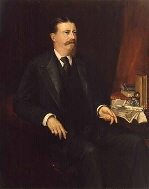Will Minnesotans Elect a Plurality-Winning Governor for a 4th Straight Cycle?
Only one other state has elected plurality-winning governors into office four times in a row since World War II (Alaska); Minnesota has not done so in 114 years
 When former Minnesota Governor Jesse Ventura left office in January 2003, he did so to lukewarm approval ratings and an uncertainty as to what his legacy would ultimately be for third parties in Minnesota and across the United States.
When former Minnesota Governor Jesse Ventura left office in January 2003, he did so to lukewarm approval ratings and an uncertainty as to what his legacy would ultimately be for third parties in Minnesota and across the United States.
While Ventura’s Independence Party has thus far failed to match his impressive 1998 (then Reform Party) gubernatorial victory, his immediate legacy is that the Gopher State will likely elect a candidate without a majority of the popular vote into the governor’s office for a record-tying four consecutive elections in 2010.
A Smart Politics analysis of nearly 900 gubernatorial elections since the end of World War II finds Minnesota is one of only four states to have elected governors without the backing of a majority of its electorate for three contests in a row.
It has been 114 years since the Gopher State last elected plurality-winning governors in four consecutive elections, dating back to the 1890s.
Minnesota voters have elected governors over the last three election cycles with 37.0 percent (Ventura, 1998), 44.4 percent (Tim Pawlenty, 2002), and 46.7 percent (Pawlenty, 2006) of the vote.
That record may very well extend to a fourth consecutive election in 2010.
In early horserace polling between Republican-endorsed Tom Emmer, Independence Party-endorsed Tom Horner (pictured above), and each of the three DFL primary hopefuls (party-endorsed Margaret Anderson Kelliher, Mark Dayton, and Matt Entenza), no candidate has reached the mid-40s.
Moreover, Horner is already polling in double-digits across multiple survey organizations, a feat his 2006 IP predecessor Peter Hutchinson failed to achieve in nearly two-dozen public polls against Pawlenty and DFL nominee Mike Hatch conducted that year.
The election of four consecutive governors with a majority of the support of the electorate is indeed a rarity, particularly in the modern political age with two-party dominance.
Since 1946, only three other states have elected governors at least three times in a row who were not elected by a majority of voters:
· Alaska: Jay Hammond (1974, 47.7 percent), Hammond (1978, 39.1 percent), Bill Sheffield (1982, 46.1 percent), Steve Cowper (1986, 47.3 percent), Wally Hickel (1990, 38.9 percent), and Tony Knowles (1994, 37.9 percent).
· Connecticut: Chester Bowles (1948, 49.3 percent), John Lodge (1950, 49.7 percent), and Abraham Ribicoff (1954, 49.5 percent)
· Maine: John McKernan (1986, 39.9 percent), McKernan (1990, 46.7 percent), and Angus King (35.4 percent)
As for Minnesota, over the course of its 64 gubernatorial contests since statehood, voters have elected four governors in a row without a majority of the vote during only one other stretch – more than 110 years ago:

· In 1892, Republican Knute Nelson was elected governor with 42.7 percent of the vote, with Democrat Daniel Lawler at 37.0 percent, and People’s Party candidate Ignatius Donnelly with 15.6 percent. Prohibition candidate William Dean won 4.8 percent.
· In 1894, Nelson won 49.9 percent of the vote with Owen again on the People’s ticket – this time winning 29.7 percent. Democrat George Becker won just 18.1 percent and Prohibition candidate Hans Hilleboe won 2.3 percent.
· In 1896, Republican David Clough was elected with 49.2 percent of the vote, with Democrat-People’s nominee John Lind at 48.1 percent. Prohibition, independent, and Socialist candidates tallied 2.7 percent collectively.
Minnesota had plurality-winning gubernatorial victors in back-to-back elections on two other occasions: 1912 (Adolph O. Eberhart) and 1914 (Winfield S. Hammond) and 1922 (J.A.O. Preus) and 1924 (Theodore Christianson).
Follow Smart Politics on Twitter.

Your analysis should have included Leslie Davis on the Republican side because I am facing off against Tom Emmer in the August 10th Republican primray.
A lot of media folks have left me out of their reporting for no known reason, but they should not have.
I am a Republican, candidate for governor, registered with the Secretary of State, and working hard with my Lt. Governor, Greg Soderberg from Austin, Minnesota, to let Minnesotans know know about “The Davis Money Plan” that will rescue Minnesota.
You can learn about us at http://www.LeslieDavis.org
When you compare us to Tom Emmer and his Lt. Governor you have to wonder how they got as far as they have.
Look me up and get in touch. Your state is counting on you.
And by the way, ask Tom Emmer if he will debate me.
Sincerely,
Leslie Davis for Governor 2010
http://www.LeslieDavis.org
612/522-9433
What is clear is that there are three candidates that each represent a particular demographic. The very conservative, the liberal and Mr. Horner near the middle.
There are notable differences between all three candidates and that should give the voting public an opportunity to choose which direction the state should move. If I remember correctly, wasn’t the 1998 campaign a negative battle between Humphrey and Coleman and Ventura was able to take advantage of that unique situation?
Eric do you think your article makes reasonable case for IRV?